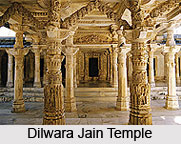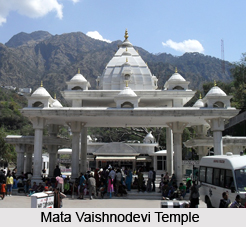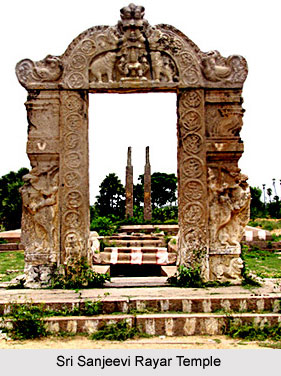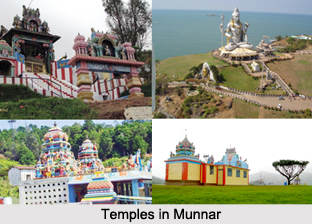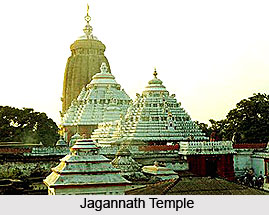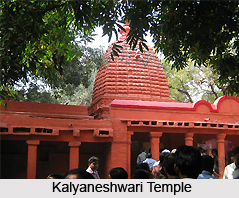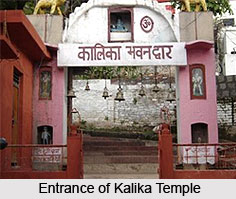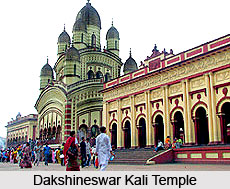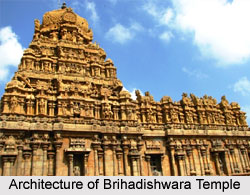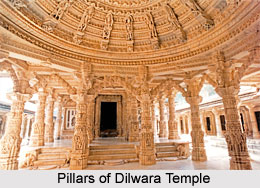 The Dilwara Temples is one of the popular Jain pilgrimage centre. It is located near Mount Abu in Rajasthan. Dilwara Temple lies at a distance of 2.5 kms from Mount Abu. These temples were built between the 11th and 13th centuries AD by the rulers of Chalukya Dynasty. The mountain has been worshipped by Hindu Shivaites and Jainas since ancient times. The temple has been a popular tourist destination for its magnificent architectural work. In the huge temple complex, there are five shrines that are dedicated to Lord Adinath, Lord Rishabh Dev, Lord Neminath, Lord Mahavira and Lord Parshvanatha respectively.
The Dilwara Temples is one of the popular Jain pilgrimage centre. It is located near Mount Abu in Rajasthan. Dilwara Temple lies at a distance of 2.5 kms from Mount Abu. These temples were built between the 11th and 13th centuries AD by the rulers of Chalukya Dynasty. The mountain has been worshipped by Hindu Shivaites and Jainas since ancient times. The temple has been a popular tourist destination for its magnificent architectural work. In the huge temple complex, there are five shrines that are dedicated to Lord Adinath, Lord Rishabh Dev, Lord Neminath, Lord Mahavira and Lord Parshvanatha respectively.
Architecture of Dilwara Temple
Dilwara Temples stand as an example of perfect architecture with intricately carved ceilings, entryways, pillars and panels that reflect the aesthetic appeal of this temple. Regarded as one of the finest specimen of architectural work, the elaborate sculptural work is a treat to the eyes. The temple is built in the Nagara style of architecture and is a storehouse of ancient manuscripts and treatise. However, there is a lack of totality in these temples as each temple was added one after another with an interval of a century.
The Dilwara temples consist of four temples of similar size and one small temple. All the temples have symmetrical plan but as a whole there is no axis that runs through group of temples. There is also proper space surrounding the temples. The temple is spread across a vast area and most of the temples are single-storied structures. The exterior of the temple is not elaborately decorated but the interior of the temple has been exquisitely designed. As the temples are single-storied and not a tall tower hence it is not visible from a distant place.
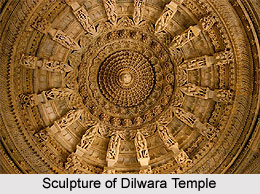 The oldest of Dilwara temples is the Vimal Vasahi temple built in 1031 A.D. it is dedicated to the first Tirthankara, Bhagwan Rishabh Dev. Other important temple in the complex is the Lunvasahi temple is dedicated to Lord Neminatha. The idol is made of stone. The interior of both the temples have been made of white marble. The walls, ceilings and the beans of the temple have been intricately designed with delicate engravings. The temple has a huge image of Bhagwan Rishabh Dev. There are many small temples in the complex dedicated to different Jain Tirthankaras. There are total 48 pillars in the temples. These pillars have been elaborately carved with beautiful images of female figures in different dancing postures.
The oldest of Dilwara temples is the Vimal Vasahi temple built in 1031 A.D. it is dedicated to the first Tirthankara, Bhagwan Rishabh Dev. Other important temple in the complex is the Lunvasahi temple is dedicated to Lord Neminatha. The idol is made of stone. The interior of both the temples have been made of white marble. The walls, ceilings and the beans of the temple have been intricately designed with delicate engravings. The temple has a huge image of Bhagwan Rishabh Dev. There are many small temples in the complex dedicated to different Jain Tirthankaras. There are total 48 pillars in the temples. These pillars have been elaborately carved with beautiful images of female figures in different dancing postures.
The "Ranga mandapa" or the domical ceiling is also a treat for the eyes. The intricately carved design of the Ranga mandapa i.e. the open-type hall is a major attraction of the temple. The mid part of it is drooping like a chandelier made of stalactite. Sixteen bodies of "Vidyadevi" i.e. goddesses of knowledge made of stone have been engraved on it. The pillars of the temple have been carved with different designs. Even all the parts of the ceiling at "bhamati" (cloisters) which surrounds "Vimana" (main shrine) are adorned with carvings such as lotuses, gods, and abstract patterns. In each external "deva-kulikas" (small shrines) that face the bhamati, a statue of a Tirthankara (Jina) is carved.












